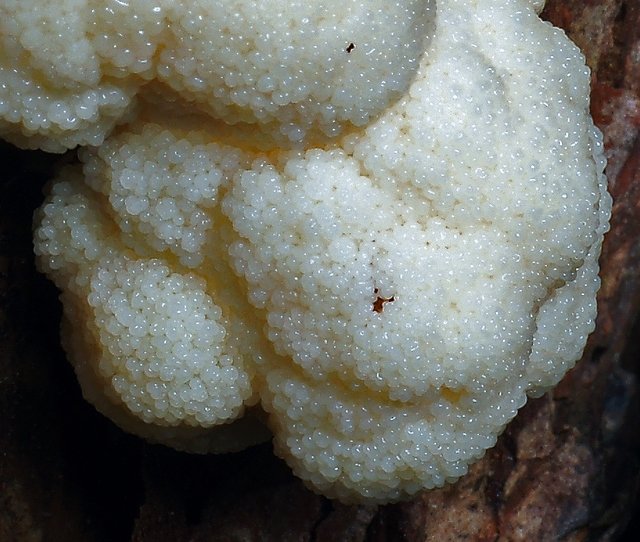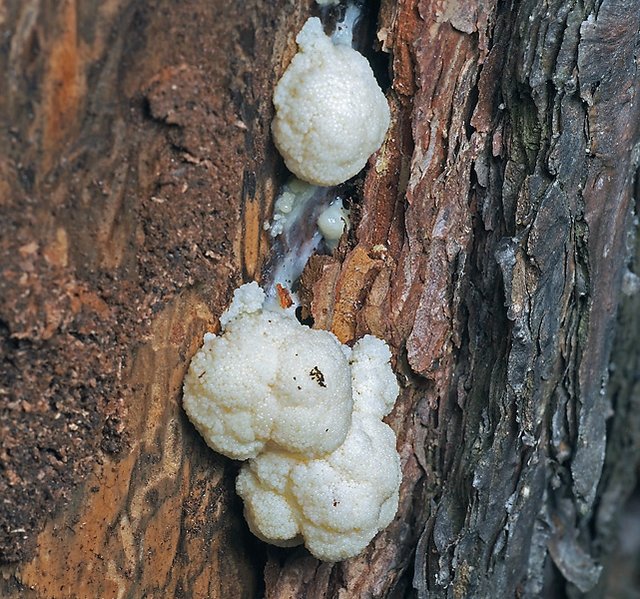Contents
Puffball Enteridium (Reticularia lycoperdon)
:
- Raincoat false
- Strongylium fuliginoides
- Lycoperdon soot
- Mucor lycogalus

Enteridium puffball (Reticularia lycoperdon Bull.) – the fungus belongs to the Reticulariaceae family, is a representative of the genus Enteridium.
External Description
Enteridium puffball is a prominent representative of the slime mold species. This fungus goes through several stages of development, the first of which is the plasmodium phase. During this period, the emerging fungus feeds on inorganic particles, mold, bacteria, and yeast. The main thing at this stage is a sufficient level of moisture in the air. If it is dry outside, then the plasmodium will be transformed into sclerotium, which is in an inactive state until suitable conditions with optimal humidity occur. The reproductive phase of development of the fungus is characterized by a white swelling element on the trunks of dead trees.
The life cycle of Enteridium puffball consists of two stages: feeding (plasmodium) and reproduction (sporangia). During the first phase, the Plasmodium phase, individual cells fuse with each other during cytoplasmic flow.
During the reproductive phase, the puffball enteridium acquires a spherical shape, becoming spherical or elongated. The diameter of the fruiting body varies between 50-80 mm. Initially, the mushroom is very sticky and sticky. Outwardly, it resembles the eggs of slugs. The completely smooth surface of the fungus is characterized by a silvery color and gradually develops. When the mushroom matures, it turns brown and breaks into small particles, showering spores on the areas under the mushroom. The fruiting body is fleshy, cushion-shaped.
Spores of Enteridium puffball are spherical or ovoid, brown and spotted on the surface. their size is 5-7 microns. Wind and rain carry them over long distances after shedding.

Grebe season and habitat
Enteridium puffball (Reticularia lycoperdon) grows on logs, stumps, dry alder twigs. This type of fungus prefers wet areas (territories near swamps, streams and rivers). It has also been established that these mushrooms grow on dead trunks of elms, elders, hawthorns, poplars, hornbeams, hazels and pines. It bears fruit after late spring frosts, and also in the autumn period.
Found in Wales, Scotland, England, Ireland, Europe, Mexico.
Edibility
The mushroom is considered inedible, but not poisonous.
Similar types and differences from them
Enteridium puffball (Reticularia lycoperdon) is not like other types of slime mushrooms.
Other information about the mushroom
Enteridium puffball in the Plasmodium phase becomes a haven for eggs of adult flies. On the surface of the fungus, larvae pupate, and then young flies carry mushroom spores over long distances on their paws.
Photo: Vitaliy Gumenyuk









